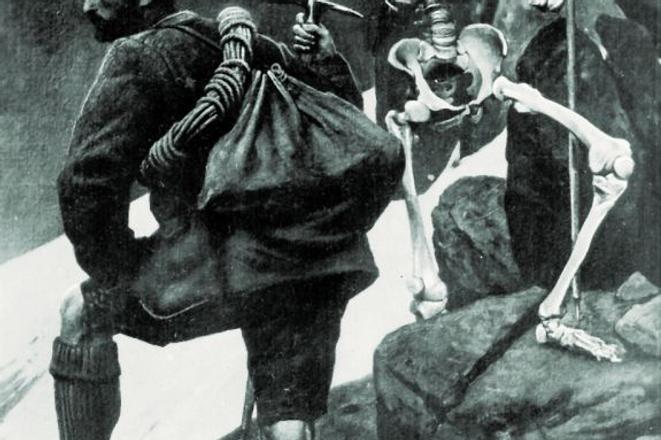IT IS a pity that warnings such as the one on this postcard no longer appear. The Grim Reaper exchanged his traditional scythe for a piton, probably to be better equipped for a hike in the High Tatras. The sportsmanlike Grim Reaper is not only urging the rock climber to be careful but also tries to show him how little time might be left in this world.
The postcard was issued in 1933 for quite prosaic reasons: its authors wanted to warn that Slovak mountains were claiming more and more victims. Before 1871, only eight ill-fated hikers had found death in the Tatras while as many as 57 died in the period between 1871 and 1918.
This was, of course, the result of a rapid increase in tourism as Slovakia’s mountains began to attract visitors from all around the region in the closing decades of the 19th century. And many of those visitors preferred to depart from the safe tourist track.
Lack of experience and bad hiking equipment were among the most common causes of tragedies. In addition, careless hikers often overestimated their skills or forgot that weather conditions can very quickly become dangerous in the mountains. Over the last century not so much has changed: the causes of hiking tragedies remain about the same.
A symbolic cemetery was built at the tarn of Popradské pleso in 1940 to commemorate all those who had not returned from a hike in the Tatras. In this charming but sad place, among dozens of wooden crosses and giant rocks, no gravestones are to be found. Only a simple inscription welcomes the visitors: “A memorial for the dead, a warning for the living.”


